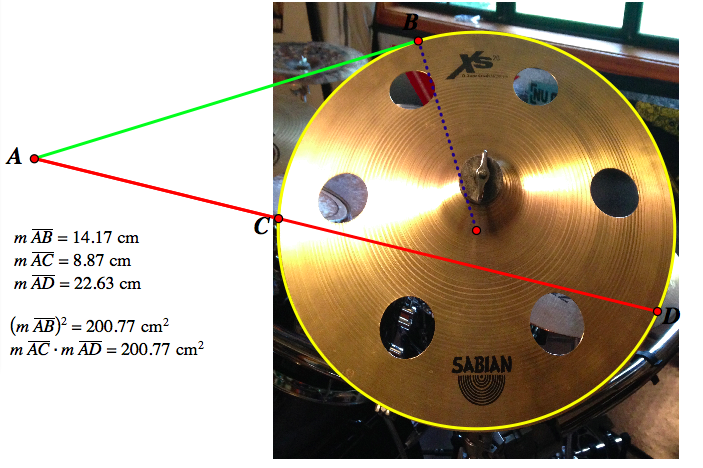
Now, three music professors – Clifton Callender at Florida State University, Ian Quinn at Yale University and Dmitri Tymoczko at Princeton University - have devised a new way of analyzing and categorizing music that takes advantage of the deep, complex mathematics they see enmeshed in its very fabric. If a pair of chords intersect (inside or outside of a circle) the product of the intercepts are equal, that is, $AE\times\angle POB $.And the so-called musica universalis or "music of the spheres" emerged in the Middle Ages as the philosophical idea that the proportions in the movements of the celestial bodies - the sun, moon and planets - could be viewed as a form of music, inaudible but perfectly harmonious.Equal chords are made by equal arcs in a circle. As chords $AB=CD$ the arcs $AB$ and $CD$ are also equal.The triangle $\triangle AOB$ subtended by the chord $AB$ at the center is always an isosceles triangle.So angles subtended by the two chords at the center are equal. Second reasoning: In triangles $\triangle AOB$ and $\triangle COD$, three sides are equal and thus these are congruent. Eventually, as $AB=CD$, $\triangle AOB$ can be perfectly superimposed on the $\triangle COD$. If the chord $AB$ is rotated about the center, the triangle $\triangle AOB$ rotates. Chords of equal length $AB$ and $CD$ subtend the same angle at the center.So, corresponding sides $AP=PB$ and corresponding angles $\angle AOP=\angle BOP$. Thus the third side is also equal (by Pythagoras theorem) and these two triangles are congruent. Reason: Being the radii, $AO=BO$ and perpendicular side $OP$ is common between the two right triangles $\triangle AOP$ and $\triangle BOP$. The perpendicular from the center of a circle $O$ to a chord $AB$ always bisects the chord $AB$ and the angle included by the chord at the center $\angle AOB$.In the figure below $AB$ is a general chord.

At the minimum it can be a point with two points coinciding and at the maximum it can be the diameter passing through the center. The central point is the center, the distance from the center to any point on the closed curve is the radius and the closed curve is a circle.Ī unique circle can be defined by two parameters: namely, the location of its center and the length of its radius $r$.Ī line connecting two points on the circle and passing through the center is of length double the radius and is the diameter $d$ of the circle.Ĭhord is a line connecting two points on a circle. Definition of a circleĪ circle is a closed curve in which every point on the curve is equidistant from a single point inside the enclosed area.

Geometry basic concepts part 2 - quadrilaterals squares polygons. Geometry basic concepts part 1 - points lines and triangles.

You may go through our two previous articles on geometry basics, Tangent of a circle: Properties of a tangent, external angle relation of a tangent, relation with a secant.Relation between intercepts of a pair of intersected chords.Cyclic quadrilateral: Properties of a cyclic quadrilateral.Chord of a circle: Properties of a chord, angle subtended by a chord or an arc, intersecting chords, angle subtended by a complementary arc.Circle basic concepts on chords, tangents, angles subtended with examplesĬircle basic concepts: Chords, arcs, tangents, cyclic quadrilateral, angle subtended by a chord and secant of a circle with examples and exercise.


 0 kommentar(er)
0 kommentar(er)
